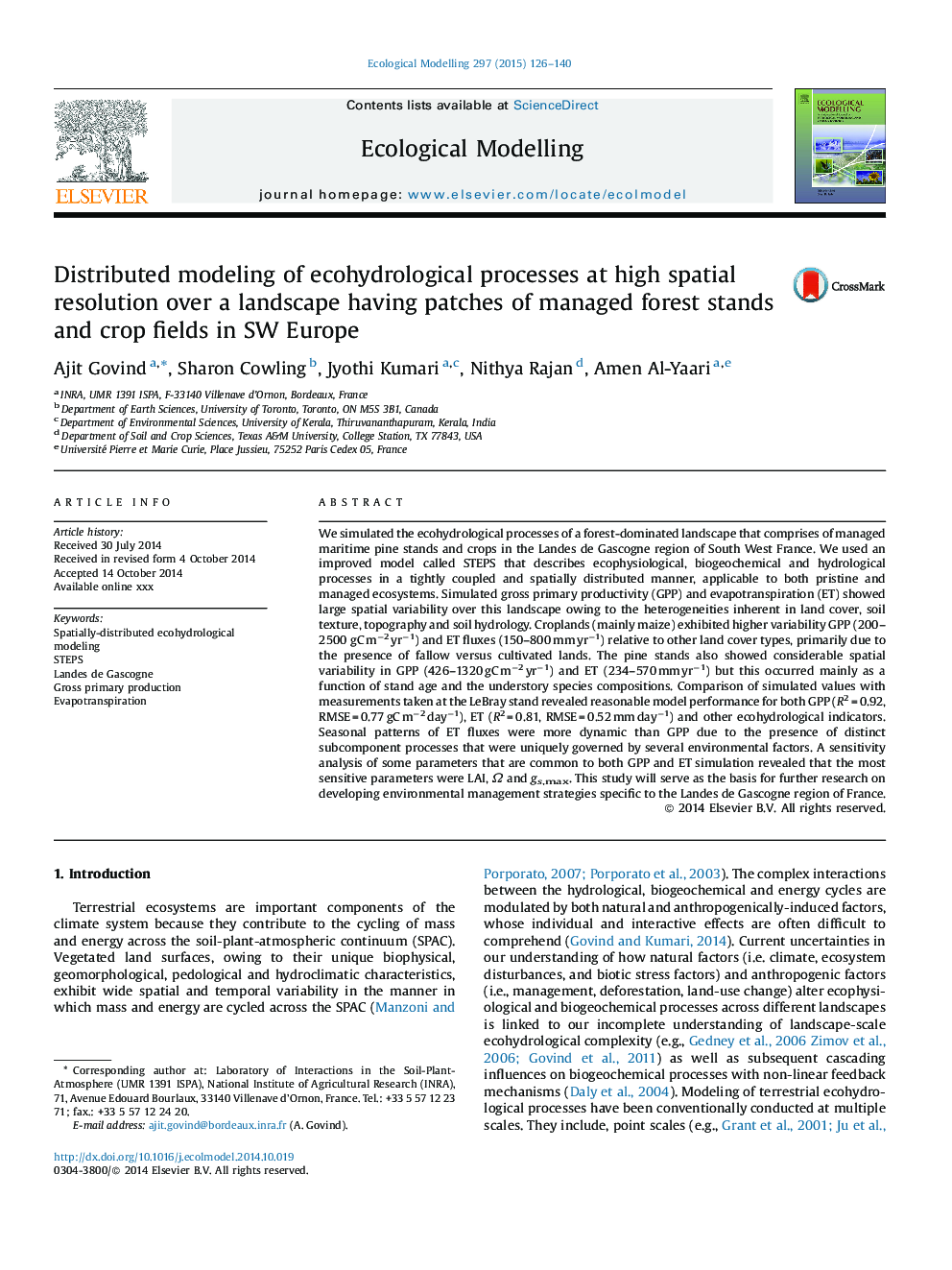| Article ID | Journal | Published Year | Pages | File Type |
|---|---|---|---|---|
| 4375823 | Ecological Modelling | 2015 | 15 Pages |
•An ecological model (STEPS), applicable to both pristine and agroecosystems.•Patterns of ET and GPP fluxes in a landscape having forest stands and crops.•Sensitivity analysis to identify the most crucial input variables/parameters.
We simulated the ecohydrological processes of a forest-dominated landscape that comprises of managed maritime pine stands and crops in the Landes de Gascogne region of South West France. We used an improved model called STEPS that describes ecophysiological, biogeochemical and hydrological processes in a tightly coupled and spatially distributed manner, applicable to both pristine and managed ecosystems. Simulated gross primary productivity (GPP) and evapotranspiration (ET) showed large spatial variability over this landscape owing to the heterogeneities inherent in land cover, soil texture, topography and soil hydrology. Croplands (mainly maize) exhibited higher ranges of GPP (200–2500 g cm−2 yr−1) and ET fluxes (150–800 mm yr−1) variability, relative to other land cover types, primarily due to the presence of fallow versus cultivated lands. The pine stands also showed considerable spatial variability in GPP (426–1320 g cm−2 yr−1) and ET (234–570 mm yr−1) but this occurred mainly as a function of stand age and the understory species compositions. Comparison of simulated values with measurements taken at the LeBray stand revealed reasonable model performance for both GPP (R2 = 0.92, RMSE = 0.77 g cm−2 day−1) and ET (R2 = 0.81, RMSE = 0.52 mm day−1) as well as other ecohydrological indicators. Seasonal patterns of ET fluxes were more dynamic than GPP due to the presence of distinct subcomponent processes that were uniquely governed by several environmental factors. A sensitivity analysis of some parameters that are common to both GPP and ET simulation revealed that the most sensitive parameters were LAI, Ω and gs,max. This study will serve as the basis for further research on developing environmental management strategies specific to the Landes de Gascogne region of France.
